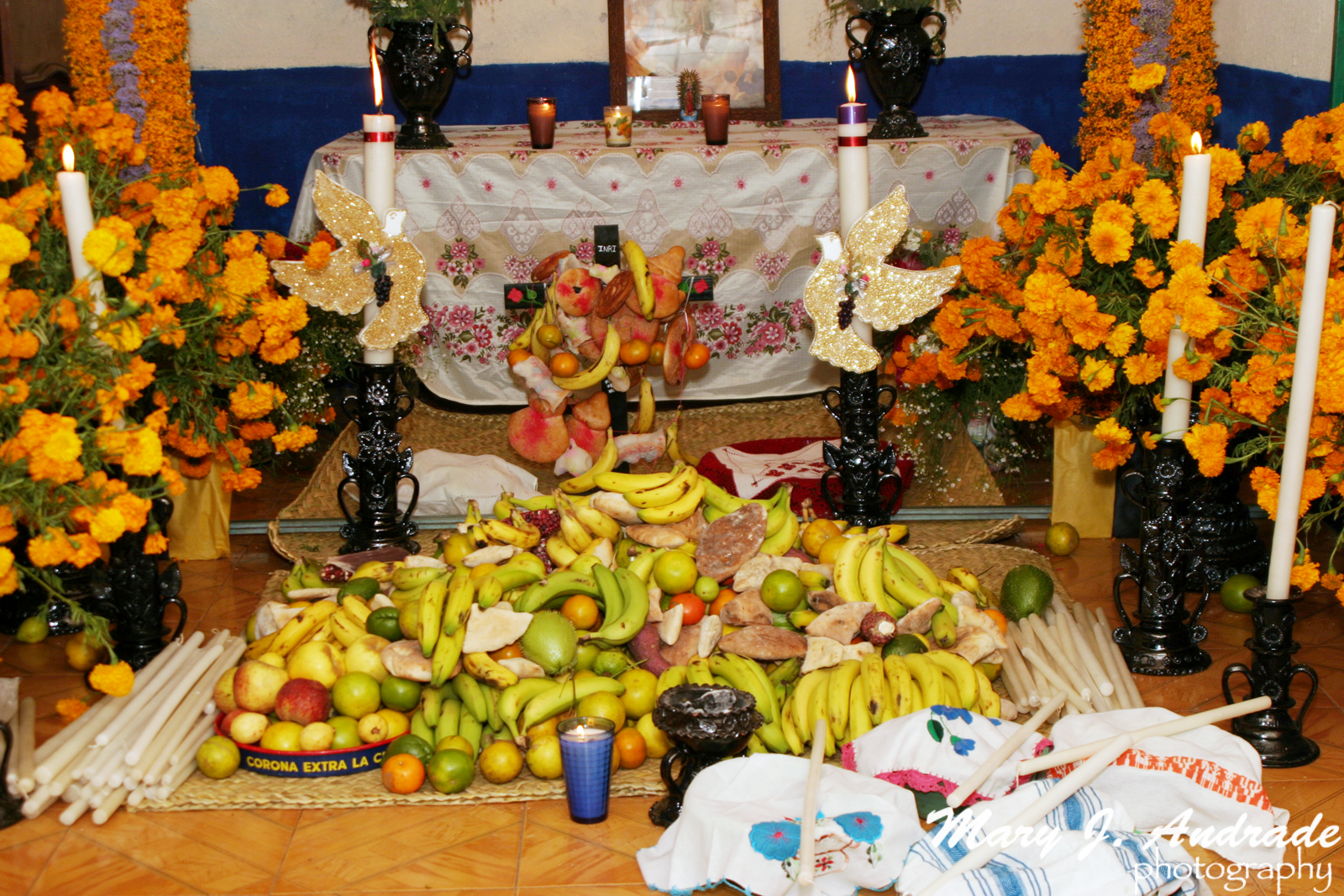


Often referred to as flowers of the dead ( flor de muerto), it’s believed that the scent of these. Probably one of the most recognizable symbols of Da de los Muertos, these skulls are often made of.
#EL DIA DE LOS MUERTOS OFRENDA FULL#
Watch our NPR Live video above to see Jinich's full cooking technique, part of our live cooking show, Passport Kitchen. The Meaning Behind Six Objects on Da de los Muertos Altars Skulls (calavera).
#EL DIA DE LOS MUERTOS OFRENDA HOW TO#
To help us celebrate, we asked Mexican chef Pati Jinich to show us how to cook her favorite kind: chicken tamales in green salsa. There are hundreds and hundreds of types of tamales, which can come with sweet or savory fillings such as beef, pork, chicken or cheese. And food and drink are a big part of the festivities - they are ofrendas, or offerings, put on altars to entice deceased loved ones to come back for a visit.Īmong the most popular food offerings are tamales - delicious little packages of masa, or dough made from corn flour, wrapped in aromatic leaves, usually corn husks or banana leaves, and steam cooked. “Oak Park is a very diverse community, and has educated people of different races on how Mexican culture celebrates and honors their ancestors,” Martinez said.In Mexico, celebrations for el Dia de los Muertos, or Day of the Dead, are already in full swing. To feel successful in school, a learning environment needs to manifest belonging, and in her classroom that starts with sharing stories and backgrounds of artists similar to her students. Marinelarena said the Dia De Los Muertos tradition at Longfellow increases visibility for Hispanic students who are the minority in Oak Park, and that representation plays a major part in a student’s growth and feeling of acceptance.Ĭhanging the learning environment in Raia’s classroom to reflect her students’ heritage and their experiences empowers them to feel like they have a voice, she said. “The whole part of the project is building communication between Mexico, the U.S. Marinelarena has connected her second-graders with second-graders in Mexico by participating in the “Symbolic Monarch Migration.” Her second-graders make butterflies to send to Mexico for the winter and students in Mexico send them butterflies back. Day of the Dead, or Da de Los Muertos, the annual Mexican tradition of reminiscing about departed loved ones with colorful altars, or ofrendas, is celebrated annually Nov. Ofrendar, en el Día de Muertos, es compartir con los difuntos el pan, la sal, las frutas, los manjares culinarios, el agua y, si son adultos, el vino. “There are no borders in the natural world,” she said. Día de los Muertos is formally celebrated from November 1st to November 2nd in honor of loved ones who have passed away. Migration patterns, and how they are affected by climate change is another topic Raia brings up in class. and Mexico to prevent immigrants from entering the U.S., and learning about the migration patterns of butterflies and its symbolism in art has shown Raia’s students that for butterflies, there are no walls. Her students know that former President Donald Trump had plans to build a wall between the U.S. “ see the monarchs in their yards, and … they’ve studied the life cycle in their science classes, they already have this connection.” “This is an opportunity in the art room to talk about a serious topic in a way that’s really relevant to children,” Raia said. As her third-graders make butterflies, they also learn about artists who use the symbolism of monarch butterflies to portray migration through their art. El Da de Muertos, que se festeja el 1 y 2 de noviembre, es una de las tradiciones mexicanas ms significativas, donde los vivos se preparan. She produced a giant monarch butterfly and her students made smaller butterflies to surround it using a wax transfer technique then they painted the body using watercolor washes.Īfter cutting it out and adding antennas, Raia’s students wrote a “hopeful” messages hidden in the line drawing of the wings. “I feel like the Hispanic students needed to see their culture represented in Oak Park,” Marinelarena said.īehind the ofrenda is a window display Raia created with her third-grade class.


 0 kommentar(er)
0 kommentar(er)
